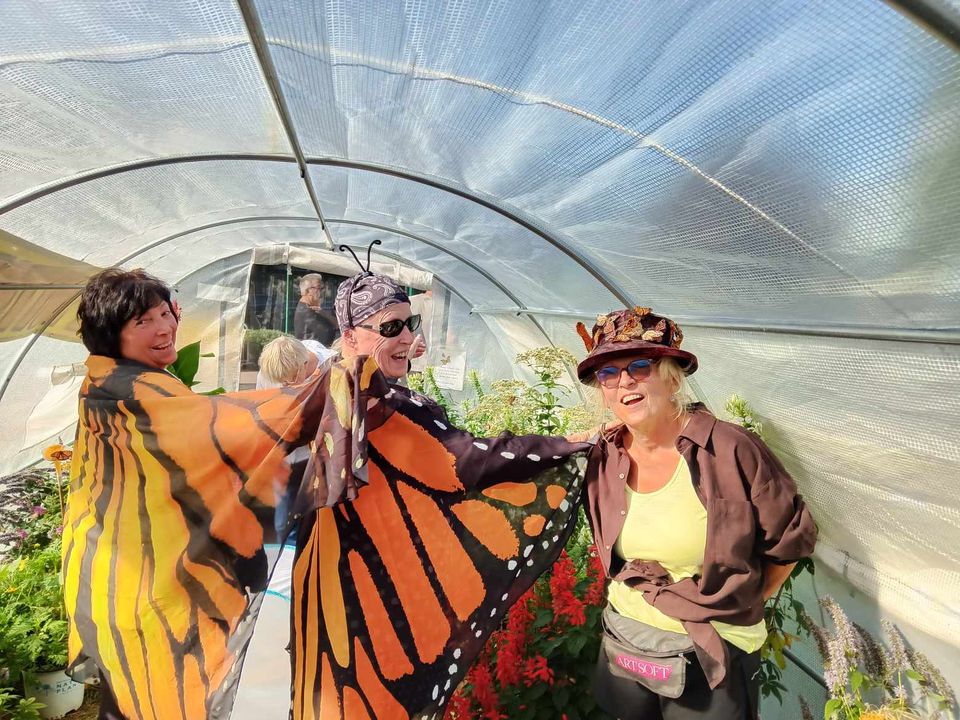The sky above North America and Canada may make a confetti-like fluttering and shimmering sound in the autumn. However, this is unrelated to nuptials. One of the most magnificent and courageous trips in nature, the monarch butterfly migration, begins about this time.

Monarch Butterfly Facts
The monarch butterfly migration southward begins in August and continues until October every year when the weather becomes cooler in North America. The majority of the population travels west of the Rockies to the coast of the Pacific, where they congregate in dispersed roosts in the trees of southern and central California. The majority of North America's monarch butterflies reside in the eastern population, which migrates from southern Canada to a mountainous region northwest of Mexico City known as the Monarch Biosphere Reserve. At higher elevations, they congregate at a few roost sites to spend the winter. These butterflies will begin their mating season again migrating to northern regions once spring arrives.
This Is No Easy Task for a Little Creature
It is not uncommon for the monarch butterfly migration to cover 2,500 or even 3,000 kilometers in an individual’s journey. Under ideal circumstances, a monarch butterfly may fly more than 100 miles in a day. Coasting on air currents allows these butterflies to travel fast while conserving energy. The monarch butterfly journey often soars 800 to 1,200 feet above the earth, being invisible to the naked eye.
The Monarch Butterfly Migration Is their Debut and Final Journey
When monarch butterflies go north in the spring, they will reproduce and die long before their progeny are prepared to migrate the same. The monarch butterflies on their autumn migration route all know just where to go, even though none of them have ever been there before. What else they do for direction finding is still a mystery, although scientists think they employ things like daylight and magnetism.
Longevity Is a Trait Gained from Monarch Butterfly Migration
Compared to their predecessors, who were born earlier in the summer, the monarchs that move south are the final generation of the year to live up to eight months longer. The usual lifespan of a monarch butterfly is two to six weeks. The monarch butterfly's lifecycle may be as long as nine months, during which time the butterfly will go south, survive the winter, return north, and eventually reproduce in the spring.
It Is True That Not All Monarch Butterflies Migrate
Even though many monarch butterflies migrate across the country, not all of them do it. The monarch butterfly, which lives and breeds in southern Florida and other continents, doesn't need to migrate at all times of the year. The reason these permanent monarchs don't migrate is still a mystery to scientists; it might be due to cold temperatures, a genetic variation, or some other explanation.
Monarch Butterfly Migration’s Crisis and How You Can Help
Even if it's joyful and relaxing to see monarch butterflies in your yard, taking care of these lovely animals has never been more emergent. The monarch butterfly's population has been steadily decreasing over the last several years. With a precipitous 90% decline in the eastern population and a staggering 99% decline in the western population, monarch butterfly populations are in grave danger.
It only takes a little bit of each of us to make a difference for these beautiful creatures by creating a decent monarch butterfly habitat. Please help the autumn monarch butterfly migration in these ways:
1. Grow Native California Milkweed in an Off-Coast Location
Being the sole host plant on which monarch butterflies can rear their caterpillars, milkweed is essential. As they mature into full-fledged caterpillars, native milkweed provides the necessary fuel and nourishment. Since the poisons in the leaves ward off predators, this is the essential plant they can consume.
Note: In order to protect your coastal home from flooding, do not grow any milkweed species to help monarch butterflies. For instance, it is not recommended to cultivate milkweed within five miles of the ocean if you reside north of Santa Barbara. Not only does milkweed not grow naturally close to the shore, but it also has the potential to disrupt the normal activity of monarch butterflies as they overwinter in the vicinity of their groves.

2. Plant Fall Nectar Sources and Trees
The mature monarch butterfly consumes the nectar offered by flowers as its food source. Native wildflowers bloom throughout late summer and early autumn, providing monarch butterflies with food and nectar as they make their lengthy migration. Great options to help monarch butterflies include asters and goldenrods, of which almost every state has its own native species. Not only will these wildflowers benefit monarch butterflies, but they will also provide visual appeal to your garden or yard.
At night or during storms and strong winds, monarch butterflies will typically congregate in trees to wait out the weather. The best way to ensure the necessary access to a helpful monarch butterfly habitat is to plant native trees in your backyard and get involved in local tree-planting initiatives. The trees also offer a home for many other kinds of species.
3. Put Down the Pesticides
It should come as no surprise that pesticides will eliminate monarch butterflies. Insecticides may kill monarch butterflies as they migrate, so it's best not to treat your yard with them, particularly any fall-blooming plants in route of the monarch butterfly journey. Refute the assertions made by mosquito spray manufacturers that their products would eliminate mosquitoes but leave valuable pollinators like monarch butterflies unharmed. That is just false when protecting monarch butterflies. To avoid disturbing monarch butterfly migration patterns, use all-natural methods of reducing mosquito bites and organic farming practices that do not use pesticides.
4. Stay Away from Pre-Treated Plants
Systematic pesticides like neonicotinoids soak into a pre-treated plant's tissues, including its nectar, rendering them lethal to insects who feed on it. Scientific studies have shown that neonicotinoids pose a threat to monarch butterflies. Inquire about the use of neonicotinoids on plants before buying them from a nursery or garden shop near you. The practice of labeling treated plants has become commonplace in many nurseries and garden stores. Make advantage of your purchasing power to contribute to the monarch butterfly conservation by letting sellers know you will go elsewhere if they refuse to respond or if the plants are treated.
5. Join the Mayors’ Monarch Pledge
Supporting the Mayors’ Monarch Pledge is a great way to get your town involved in protecting monarch butterflies. The pledge asks mayors and other city officials to take the lead in local monarch butterfly conservation initiatives. A variety of measures have been taken, including revising weed regulations to include plants benefiting the monarch butterfly journey, reducing or eliminating pesticides on municipal land, making a formal monarch butterfly conservation announcement, and beginning community education programs about planting for monarchs.
While learning the monarch butterfly facts, helping monarch butterflies is accessible to everybody. Providing a breeding site and food sources before the lengthy autumn monarch butterfly journey is an easy way to make a difference in their lives.
Special thanks

To Craig TheButterflyman, who has been dedicating his time and effort to protecting monarch butterflies for decades, and brought the story to us. Now the group is over 600,000 members, who are trying to help the monarch butterfly migration. Feel free to join.









